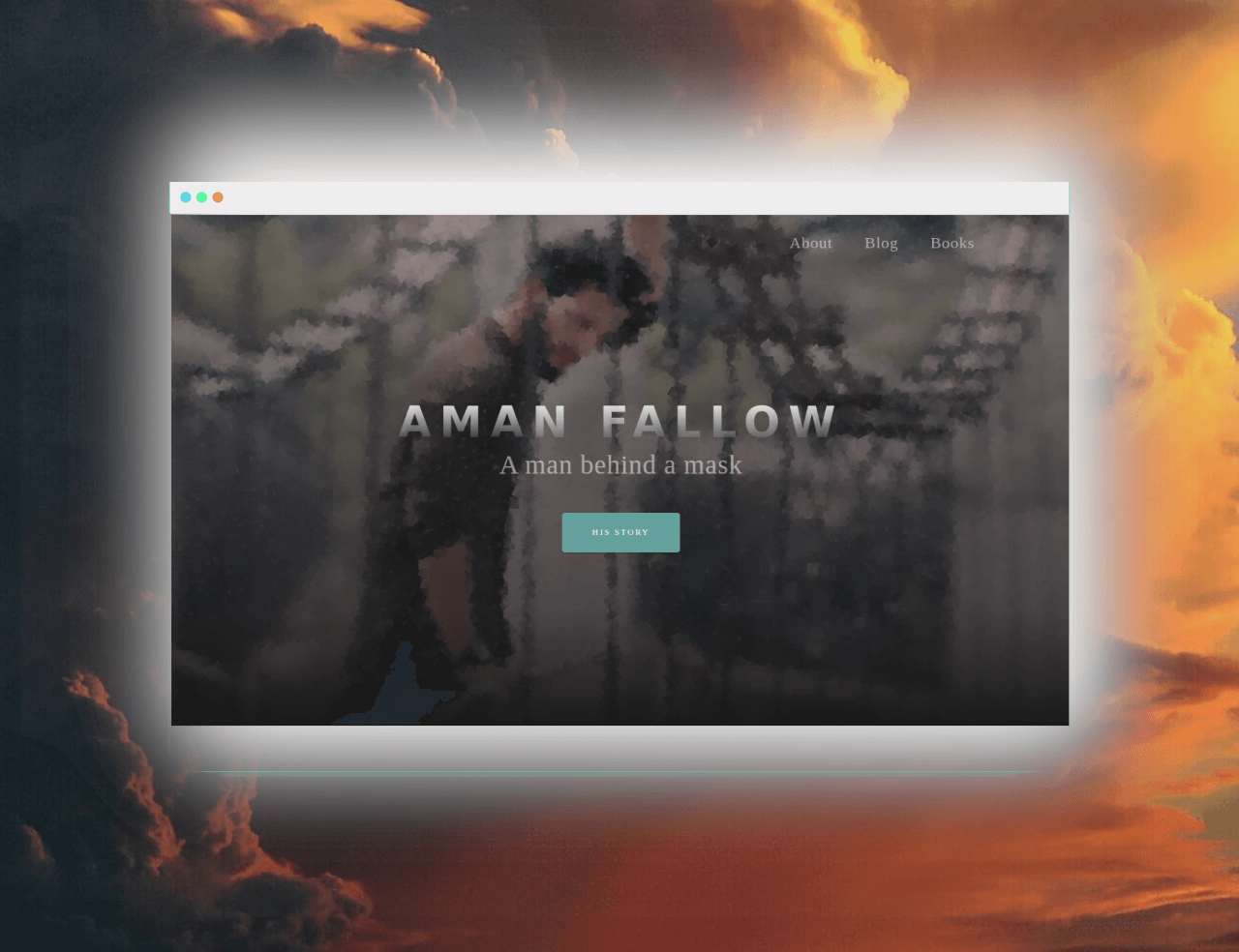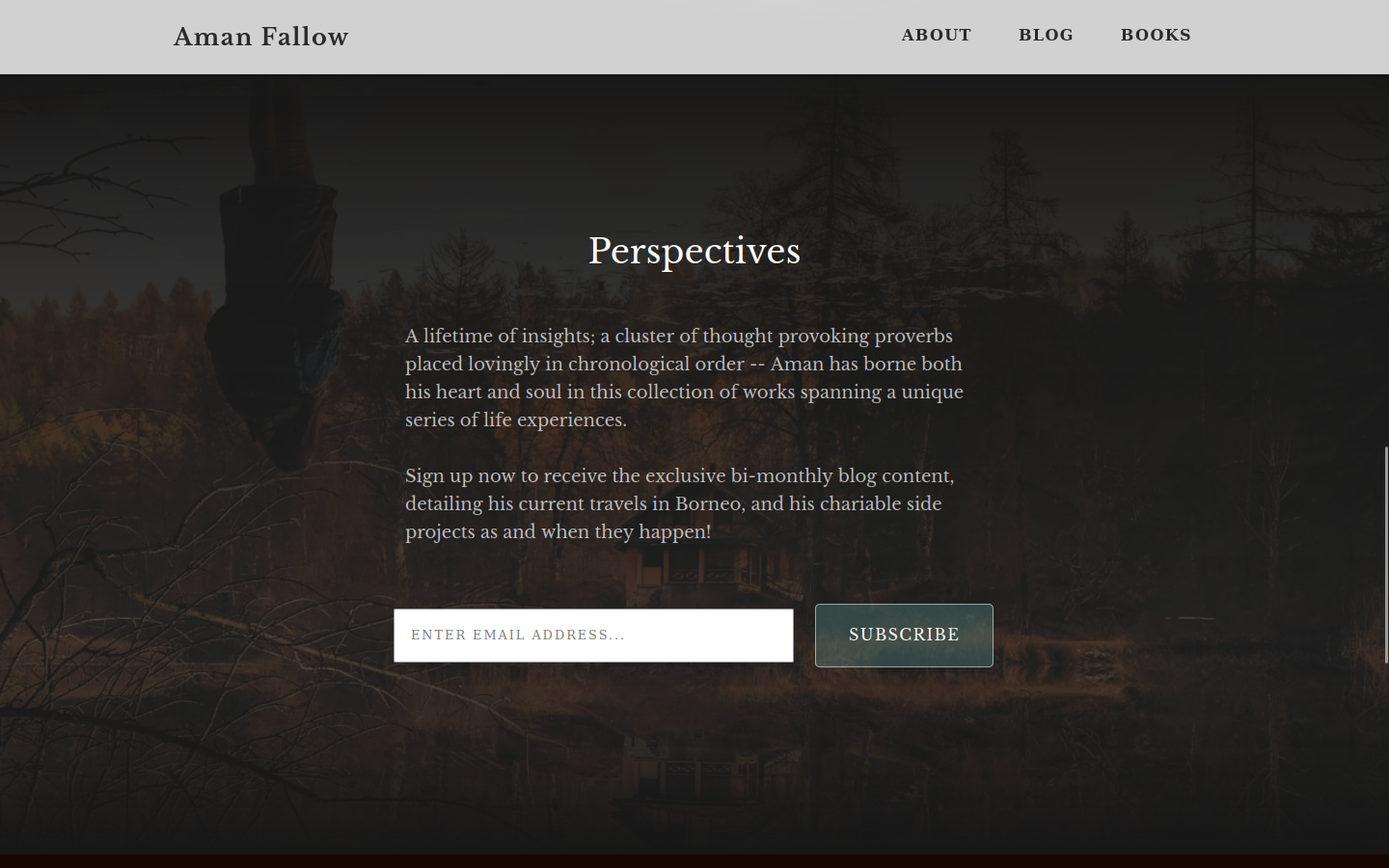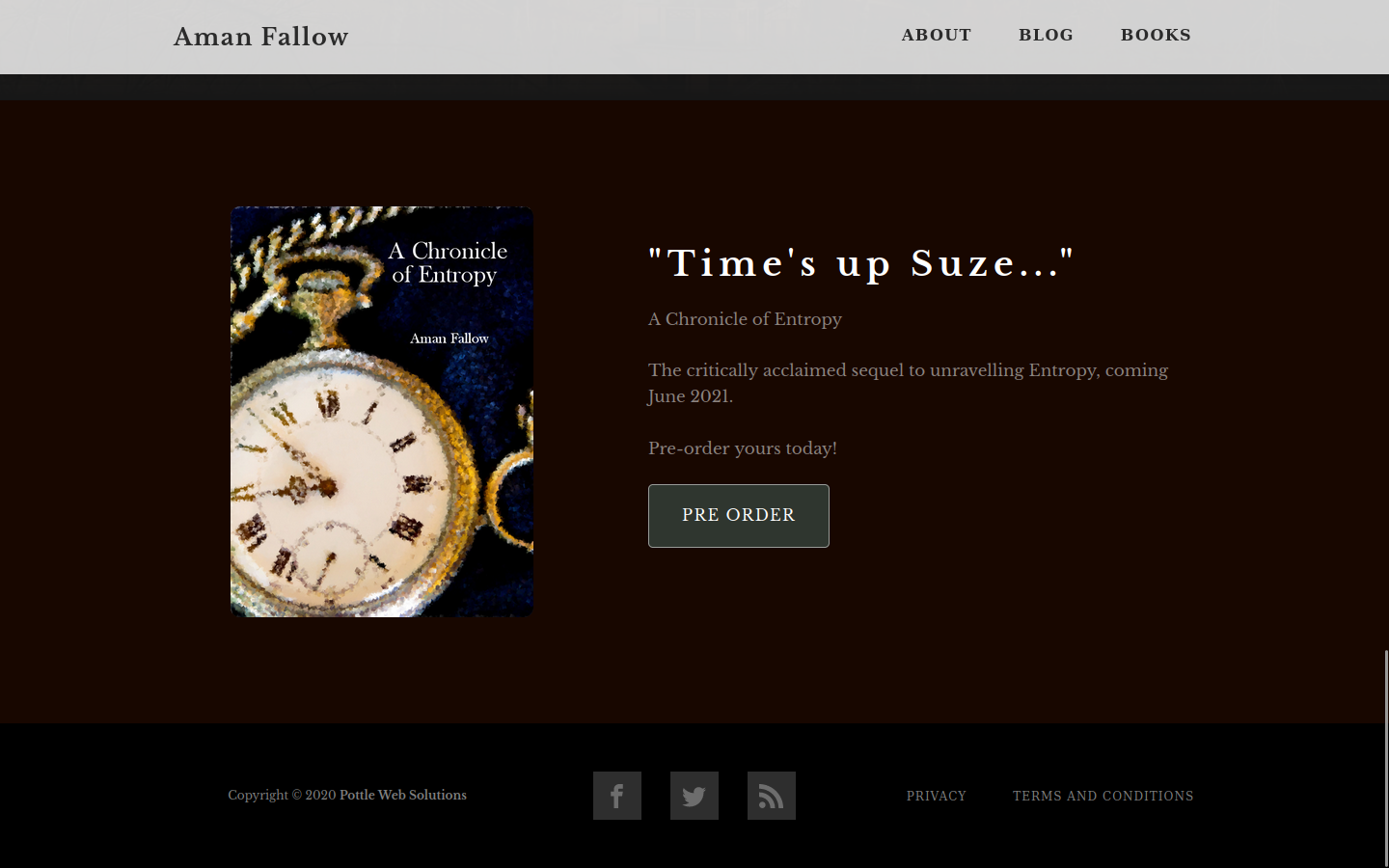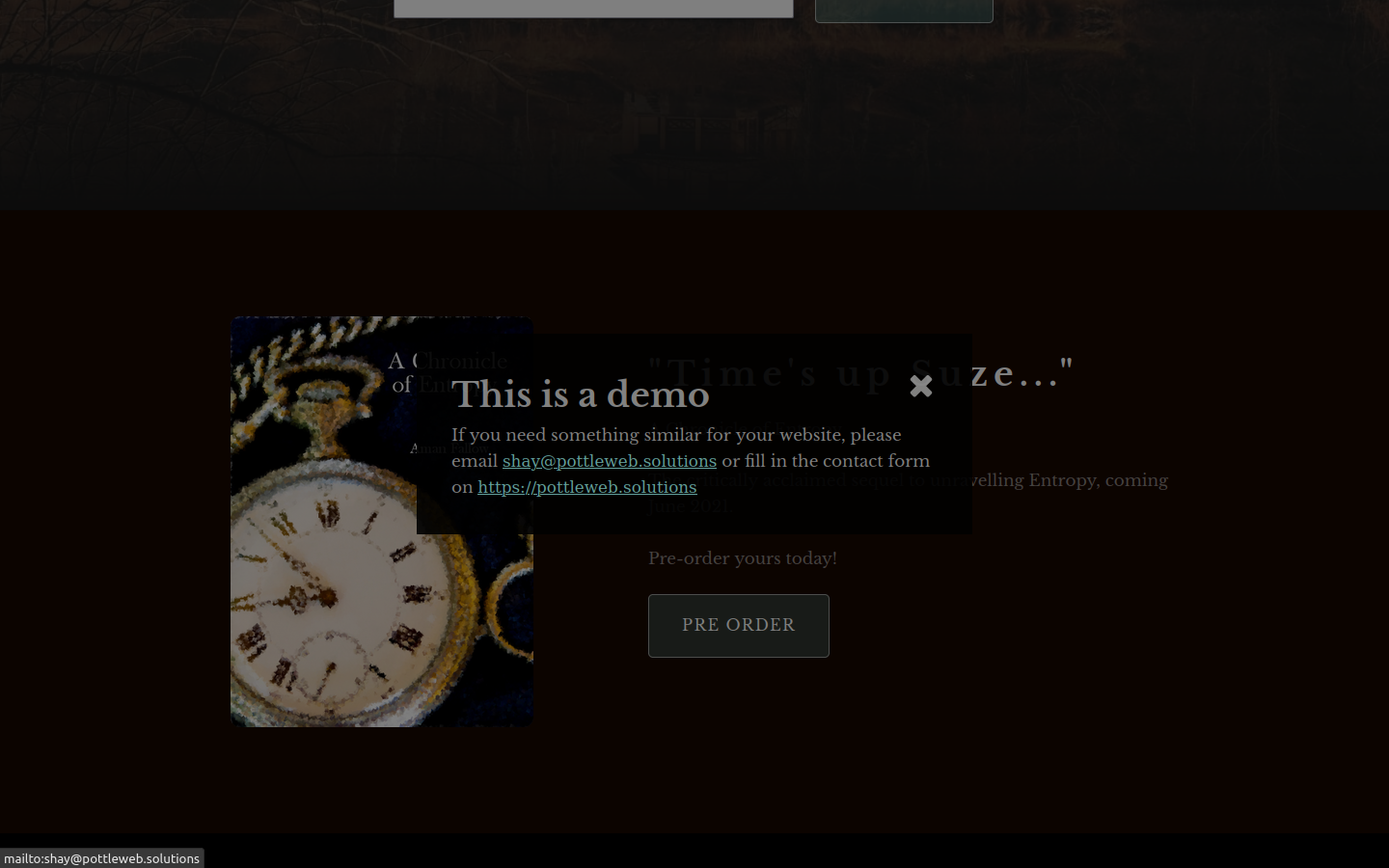
This website portrays the work of a fictional author. It's intent is to be straightforward, leading the site visitor from browser to potential buyer.
According to the principle 'paradox of choice', giving a person too many options can lead to less sales rather than more. Conversely of course, fewer choices lead to more sales! (More on that here.)
Suffice to say, with that in mind, the purpose of such a website as this is to leverage such a finding, making it work for us.


Here we're intentionally and carefully leading a potential website visitor through a basic sales funnel of capturing their attention, gently leading them through the design principles of progressive disclosure and signal to noise ratio, while presenting clear calls to action along the way. In so doing, we're maximising the likelihood that by the time the user reaches the end of the page, they'll be ready to purchase.
Seeing as the target audience of such a site will be the client's literal audience -- that is, those who have read his books, the moody aesthetic of the site is tailored to reflect the book's themes (of which his audience will already be aware, or will at least set the tone of his work to those discovering his literature for the first time). The colours and font choice are intentionally selected to capitalise on the effect, making the design simple and effective for its intended purpose, concluding with a final call to action.
Social icons at the bottom enable the audience to quickly and painlessly link to and share his work, increasing the possiblities for his gaining further traction in the industry by casting a wider net.
A minimalistic email capture form grants the author the ability to watch his audience grow over time. This enables him to tailor and refine the message and tonality of his site to his actual website visitors, or to adjust his message to more effectively target his audience in future endeavours. In do soing, he capitalises on the successes of his marketing campaigns by adjusting to the needs of his literal audience rather than making best guesses.


Other case studies
Web development studio
API
Website build
Website build